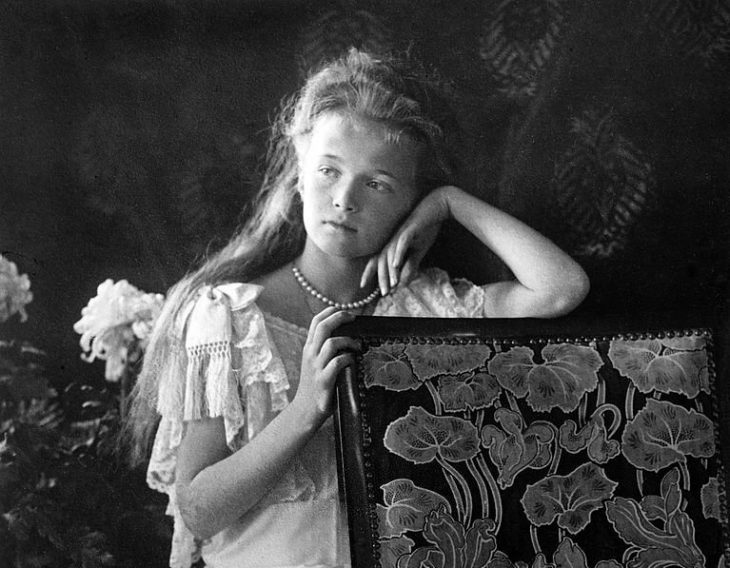
In the annals of history, few figures have sparked as much fascination and speculation as Anastasia Romanov. The youngest daughter of Tsar Nicholas II, the last sovereign of Imperial Russia, Anastasia’s life was tragically cut short during the Russian Revolution. Yet, her story has lived on, fueling countless theories, books, and films. In this article, we delve into the life and legacy of Anastasia Romanov, presenting twelve intriguing facts that you may not know about this enigmatic princess.
Royal Birth
Anastasia was born on June 18, 1901, in Peterhof Palace, Saint Petersburg, Russia. She was the fourth daughter of Tsar Nicholas II and Tsarina Alexandra, and the youngest of the five Romanov children.
Grand Duchess
As the daughter of the Tsar, Anastasia held the title of Grand Duchess. Despite her royal status, accounts from those who knew her describe Anastasia as vivacious, energetic, and less concerned with royal protocol than her siblings.
Family Ties
Anastasia was closely related to several European monarchs. Her mother, Tsarina Alexandra, was a granddaughter of Queen Victoria of the United Kingdom. Anastasia’s first cousin, Prince Philip, Duke of Edinburgh, is the husband of Queen Elizabeth II.

The Romanov Tragedy
In the wake of the Russian Revolution, Anastasia and her family were arrested by the Bolsheviks. They were held captive for several months before being executed in the early hours of July 17, 1918. Anastasia was just 17 years old.
Anastasia’s Survival Legends
Following the Romanovs’ execution, rumors swirled that Anastasia had somehow survived. Several women came forward claiming to be Anastasia, the most famous of whom was Anna Anderson. However, none of these claims were ever definitively proven.
Scientific Discovery
In 2007, nearly 90 years after the Romanovs’ execution, a grave was discovered near the original burial site that contained the remains of a young woman and a boy. DNA testing confirmed that these were the remains of Anastasia and her brother, Alexei, finally putting to rest the rumors of Anastasia’s survival.
Hemophilia in the Family
Anastasia’s younger brother, Alexei, suffered from hemophilia, a genetic disorder that prevents blood from clotting properly. The disease was a closely guarded secret, as it could have been seen as a weakness in the royal lineage.
Anastasia’s Tutor
Anastasia and her sisters were tutored by a Swiss tutor named Pierre Gilliard. He described Anastasia as lively, mischievous, and a gifted actress.
Cultural Impact
The story of Anastasia has had a significant cultural impact, inspiring numerous books, plays, and films. Perhaps the most famous of these is the 1997 animated film “Anastasia,” which presents a fictionalized account of Anastasia’s life.
Anastasia’s Faith
Anastasia was a member of the Russian Orthodox Church. Despite the hardships she faced, she reportedly maintained her faith until the end of her life.
Anastasia’s Name
The name Anastasia comes from the Greek word “anastasis,” which means “resurrection.” This has added an extra layer of intrigue to the myths surrounding her supposed survival.
Canonization
In 2000, Anastasia and her family were canonized as passion bearers by the Russian Orthodox Church. This designation is given to saints whoface death in a Christ-like manner.
Conclusion
The life and legacy of Anastasia Romanov continue to captivate the world, over a century after her untimely death. Her story, marked by royal privilege, political upheaval, and tragic end, offers a poignant glimpse into a turbulent period of history. Despite the myths and mysteries that have grown around her, the real Anastasia emerges as a lively, spirited young woman who faced extraordinary circumstances with courage and faith. As we continue to explore her story, we are reminded of the enduring power of truth, even in the face of time and speculation.
Frequently Asked Questions (FAQs)
Who was Anastasia Romanov?
Anastasia Romanov was the youngest daughter of Tsar Nicholas II and Tsarina Alexandra of Russia. She was a Grand Duchess of Russia and was tragically executed with her family during the Russian Revolution.
Did Anastasia Romanov survive the execution?
Despite numerous rumors and claims, there is no credible evidence to suggest that Anastasia survived the execution. In 2007, a grave was discovered containing the remains of a young woman and a boy, later confirmed through DNA testing to be Anastasia and her brother, Alexei.
Who claimed to be Anastasia Romanov?
Several women claimed to be Anastasia Romanov, the most famous of whom was Anna Anderson. However, none of these claims were ever definitively proven.
What is Anastasia Romanov known for?
Anastasia Romanov is best known as the youngest daughter of the last Tsar of Russia, Nicholas II. Her life and tragic death during the Russian Revolution have inspired numerous books, plays, and films.
How is Anastasia Romanov related to Queen Elizabeth II?
Anastasia’s mother, Tsarina Alexandra, was a granddaughter of Queen Victoria of the United Kingdom. This makes Anastasia a first cousin of Prince Philip, Duke of Edinburgh, who is the husband of Queen Elizabeth II.
Was this page helpful?
Our commitment to delivering trustworthy and engaging content is at the heart of what we do. Each fact on our site is contributed by real users like you, bringing a wealth of diverse insights and information. To ensure the highest standards of accuracy and reliability, our dedicated editors meticulously review each submission. This process guarantees that the facts we share are not only fascinating but also credible. Trust in our commitment to quality and authenticity as you explore and learn with us.
